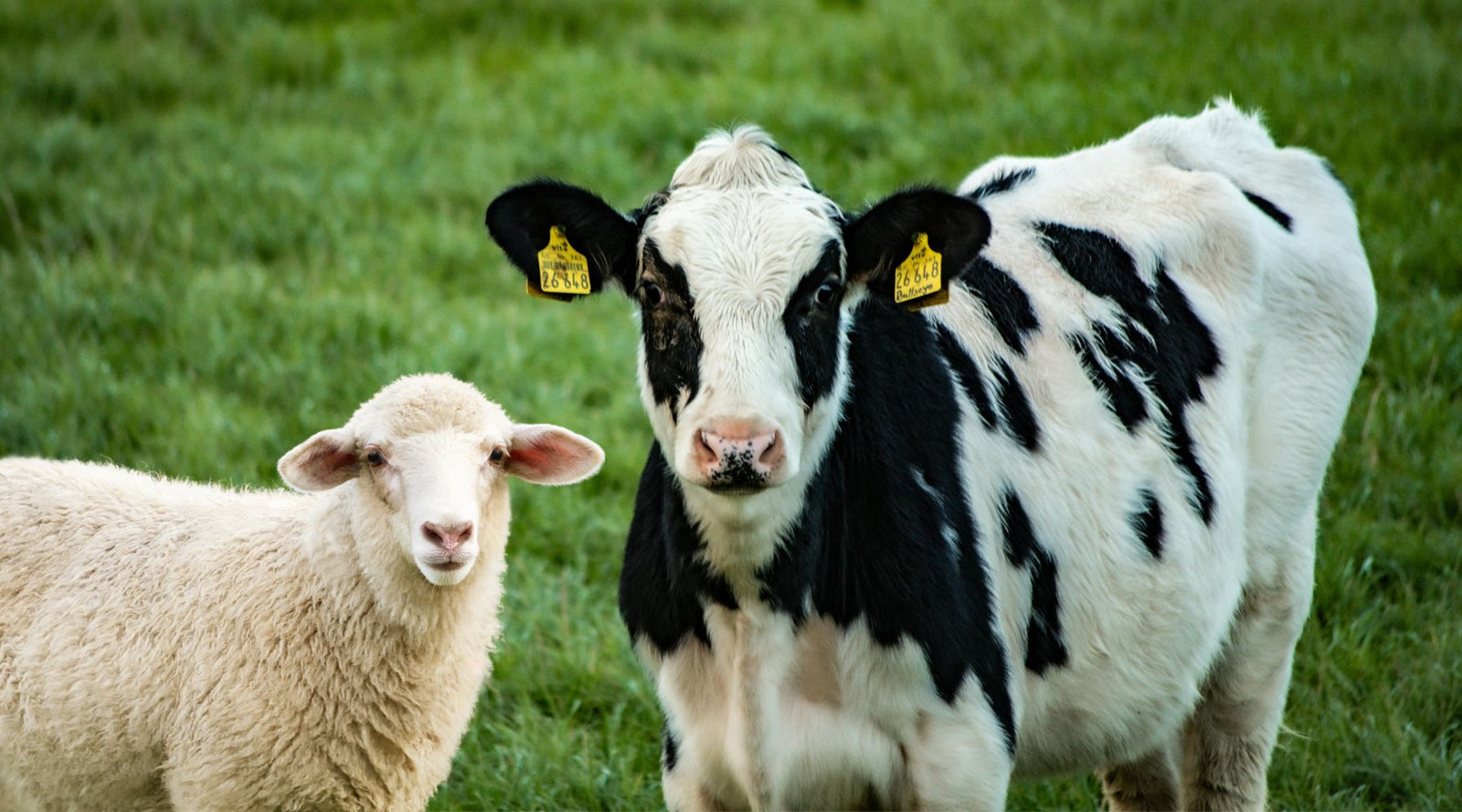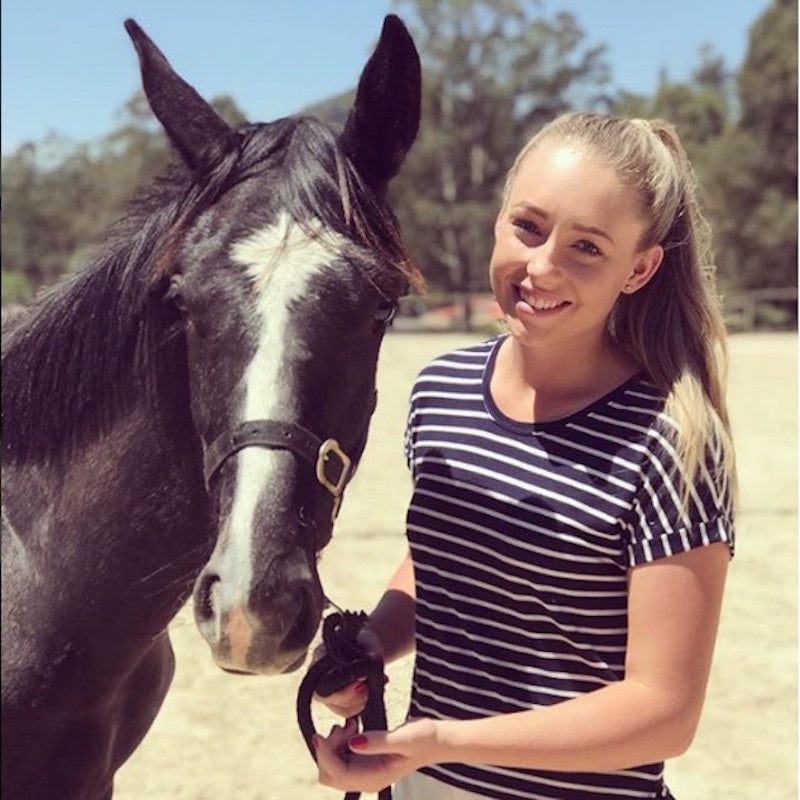Christmas delivery cut off: MIDNIGHT 16th DECEMBER - Last orders for a pre-Christmas dispatch. MIDDAY 18th DECEMBER - Order collections close. MONDAY 5th JANUARY - Hippo HQ re-opens.
Christmas delivery cut off: MIDNIGHT 16th DECEMBER - Last orders for a pre-Christmas dispatch. MIDDAY 18th DECEMBER - Order collections close. MONDAY 5th JANUARY - Hippo HQ re-opens.
Horse & Rider
Facial eczema in livestock: causes, prevention & natural liver support
by Fiona Lane October 29, 2025

Facial Eczema (FE) is a costly and frustrating seasonal challenge for farmers, particularly in warmer, humid regions where spore counts can rise rapidly. Sheep, cattle, deer, alpacas, and llamas are all susceptible to facial eczema, impacting liver function, fertility, and productivity. In this article, we’ll explain what facial eczema is, why prevention is essential, and how the proactive management of facial eczema, including liver support with natural remedies that have no withholding period, can help protect your animals and your livelihood through the high-risk months.
Key highlights:
- Facial eczema is caused by fungal spores (Pithomyces chartarum) that grow on dead plant material in the pasture when conditions are warm and humid.
- Facial Eczema in livestock is a serious liver condition affecting sheep, cattle, deer, alpacas, llamas, and other livestock during warm, humid months.
- The toxin sporidesmin (from fungal spores) damages the liver and can lead to photosensitivity, weight loss, reduced fertility and impacts on animal performance and farm productivity.
- To identify facial eczema look for behaviour changes, signs of irritation around the head or face, swelling around the eyes or muzzle, drooping ears or skin redness. Animals with FE symptoms will seek shade and may be separated from other animals in the flock or herd that do not have FE.
- Early prevention and monitoring are critical as damage often occurs before visible signs appear.
- Pasture management, animal health preventative management, breeding for tolerance, and liver support all play a role in reducing impact.
- Natural trough-dosed remedies, such as Facial Eczema Prev and Facial Eczema Active, provide easy, chemical-free support with no withholding period.
Understanding the environmental triggers and how they affect your stock is the first step to managing outbreaks effectively. Below, we explain the causes of facial eczema, how liver damage develops, and why combining pasture management with our remedies can help to make a real difference to the comfort and long-term performance of your herd.
What is facial eczema in livestock?
Facial Eczema (FE) in farmed livestock is a serious, non-contagious liver disease caused by the toxin sporidesmin. This toxin is produced by fungal spores (Pithomyces chartarum) growing in decomposing organic matter found right on the base of the plant or slightly above the soil surface, hidden by the green grass canopy in the pasture, especially during warm, humid New Zealand and Australian summer and autumn conditions. It causes liver damage, leading to sickness, productivity loss, and characteristic skin photosensitivity.
Causes of facial eczema
Facial eczema is caused by fungal spores (Pithomyces chartarum) that grow on dead plant material in the pasture. When conditions are warm, humid, and moist, the fungus multiplies rapidly and produces sporidesmin, a toxin that damages the liver when eaten by grazing animals.
- High-risk conditions: warm nights, light rain, and high humidity.
- Typical season: late January through April in the Southern Hemisphere.
- High-risk areas: sheltered paddocks, gullies, and north-facing slopes with poor airflow and paddocks with a high percentage of dead, dry matter.
- Paddocks that have been previously laxed grazed, hence contributing to a high percentage of dead dry matter left in the pasture sward prior to the next grazing.
Why the liver matters
The liver plays a vital role in keeping farmed livestock healthy, acting as the body’s natural filtration and detoxification system. It processes nutrients, metabolises fats and proteins, and removes toxins, including sporidesmin, the fungal toxin responsible for facial eczema. When toxins accumulate in the bloodstream, the liver can become damaged or overloaded, leading to inflammation.
- Animals become photosensitive, especially on light or exposed skin.
- Growth rates, milk yield, fertility, and long-term animal performance and production decline as the animal’s metabolism struggles to function efficiently.
Even mild or subclinical liver damage can reduce productivity for seasons to come, affecting weight gain, breeding, and overall livestock performance and farm productivity.
How to identify facial eczema
Facial eczema can develop quickly once spore levels rise, and by the time visible symptoms appear, significant liver damage may have already occurred. The first signs are often subtle and can easily be mistaken for heat stress or insect irritation, so paying close attention to small behavioural changes can make all the difference.

Rubbing the face or head against trees or fenceposts can be any early sign of facial eczema in sheep, cattle and other farmed livestock.
Early (subclinical) signs:
- Seeking shade during the day or avoiding sunlight.
- Puffy eyes or swelling around the face.
- Restlessness, head shaking, irritation or rubbing against posts and fences.
- Separation from other grazing animals on the farm.
If left unattended, more severe symptoms can appear as liver damage progresses.
Advanced (clinical) signs:
- Peeling or crusty skin on the face, ears, or udder area.
- Noticeable weight loss and poor appetite.
- Drop in milk production or conception rates.
Monitoring and Prevention
The best way to protect your animals is through consistent monitoring, proactive prevention, and early liver support.
1. Check spore counts
Monitoring spore counts collected from paddock grass samples is the first line of defence during facial eczema season.
|
Dairy NZ Facial Eczema Spore Count Risk Level Guide |
|
|
Low |
Less than 15,000/g of pasture |
|
Slight |
15,000-30,000 (begin zinc treatment if trending to 30,000) |
|
Moderate |
30,000-60,000 |
|
High |
Greater than 60,000 |
- Send grass samples to your vet or testing lab prior to animals grazing the paddock.
- Track local vet club spore reports. In New Zealand, Gribbles website collates spore count data from across the regions, while Dairy Australia provides results for Australian farmers.
- Keep annual records to identify high-risk paddocks on the farm. Avoid grazing these paddocks during seasonal high-risk periods.
2. Manage pastures
Effective pasture management plays a crucial role in reducing exposure to toxic spores.
- Avoid grazing too low, as spores live near the soil surface.
- Graze paddocks that are cooler and windy during the seasonal risk period.
- Avoid grazing sheltered paddocks which may have no wind flow and high humidity during the seasonal risk period.
- Prepare pastures by integrating sheep and cattle grazing management to reduce dead matter in the pasture swards.
- Rotate mature livestock stock to utilise and remove dead matter from the pasture sward to reduce potential spore buildup.
- Plant pasture with species that have a low spore count, such as pure tall fescue or grass-free alternatives such as chicory, plantain and legumes.
3. Breed for tolerance
Over time, genetic selection can significantly reduce the severity of facial eczema outbreaks.
- Choose sires from facial-eczema-tolerant lines to improve long-term resilience.
- Expose your breeding dams and replacements to a targeted spore challenge for your farm before you actively intervene with a dosing program.
4. Support liver health
Early and ongoing liver support strengthens natural detoxification pathways and helps animals cope better with seasonal challenges.
- Start liver support before spore counts start to climb
- Traditional zinc dosing can help, but carries risks such as scouring and the stress of yarding and loss of nutritional intake.
- Natural remedies provide a low-stress alternative with no risk of overdosing or residue concerns.
Natural liver support for livestock
Our natural remedies for livestock make prevention and management of facial eczema simple with easy trough dosing that treats multiple animals at once - no stress, no mess. With no withholding period for meat or milk, they’re a safe, effective way to support healthy liver function and resilience in your herd.
Preventing facial eczema in sheep and cattle
Our professionally formulated Facial Eczema Prev helps to support animals’ immune response during high-risk periods for facial eczema.
- Contains Chelidonium and other remedies which are traditionally used for liver support.
- No withholding period, making it safe for meat and milk production.
- Trough dosing makes it easy to cover all animals on the farm – avoids the stress of yarding animals, limits exposure to other animal health diseases, and reduces labour inputs.
Managing facial eczema in livestock
Our Facial Eczema Active remedy is formulated to assist with a healthy immune response to symptoms of facial eczema.
- No withholding period, and suitable for all farmed animals.
- Trough-dosing every second day provides convenient coverage for all livestock on the farm with no residue buildups.
How trough dosing works
Trough dosing is an easy and cost-effective way to support the health of cattle, sheep, pigs, chickens, alpaca, deer, and more. One dosed trough can provide cover for all animals that use the trough without harming animals that don’t need to be dosed. The remedy uses hydrogen molecules to disperse evenly through water and only needs to contact a mucous membrane such as the tongue, gums, or lips.
Common mistakes to avoid
Even experienced farmers can get caught out by facial eczema. Understanding the most common management mistakes helps protect your animals earlier and avoid issues like liver damage, scouring, and fertility loss before they impact production.
- Waiting for visible signs: liver damage can occur well before symptoms appear.
- Over-reliance on zinc: can cause scouring and flystrike, adding stress to already vulnerable animals.
- Ignoring subclinical damage: growth rates, fertility and milk output often drop long before obvious signs of facial eczema develop.
Final Thoughts
Facial eczema is a challenging livestock health issues for farmers, but it’s also one of the most manageable with prompt action and the right tools. Monitoring spore counts, supporting liver health, and choosing natural, easy-to-use remedies like Facial Eczema Prev and Facial Eczema Active can help protect your herd and your bottom line.
The convenience of trough dosing and the benefit of no withholding period make these remedies a good option for farmers who want to stay one step ahead of facial eczema.

Homeopathic Practitioner
Fiona J. Lane
Fiona Lane is the Founder of Hippo Health and an accomplished Animal Homeopath. Driven by a passion for effective and affordable natural health, she has formulated the Hippo Health and BioPet ranges of gentle, non-toxic remedies. Fiona is dedicated to providing straightforward, trusted solutions that support the well-being of horses, pets, and people.
General Disclaimer: Always follow dosing instructions. Our remedies are formulated to support the natural immune system of horses, pets, livestock, and people. We do not claim to treat, medicate, or cure any health conditions. If you are worried an animal may be in pain or suffering, please contact your veterinarian.




